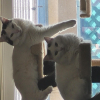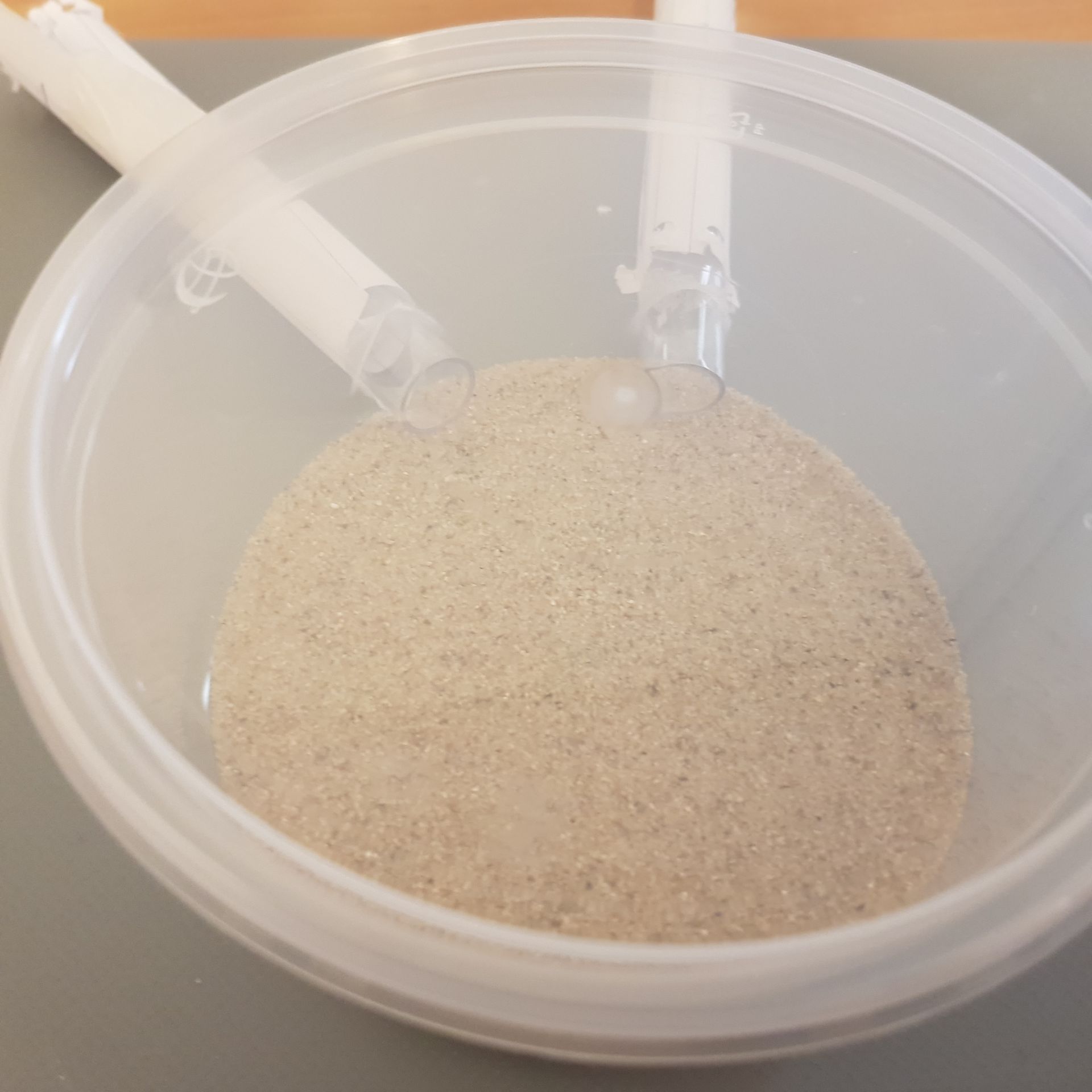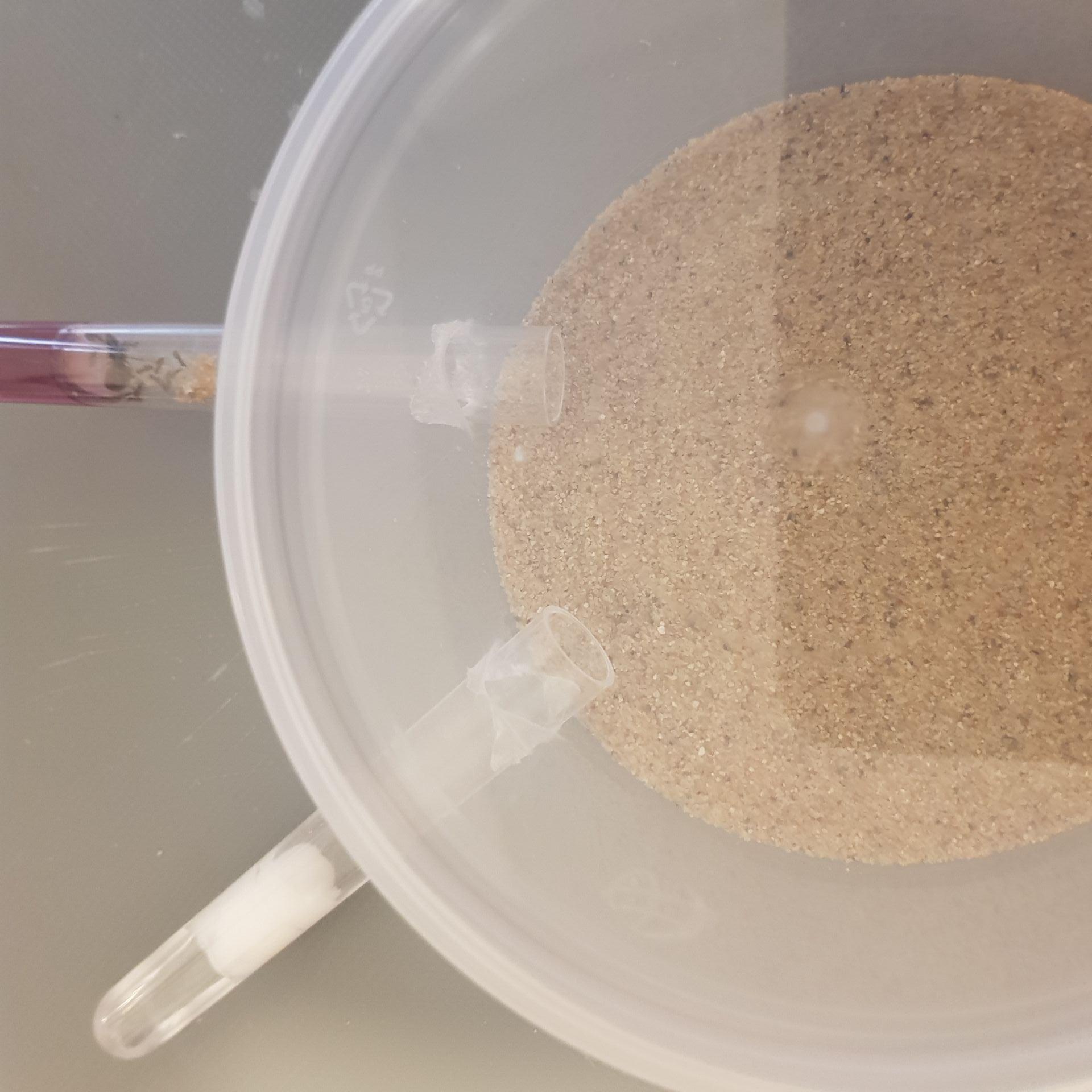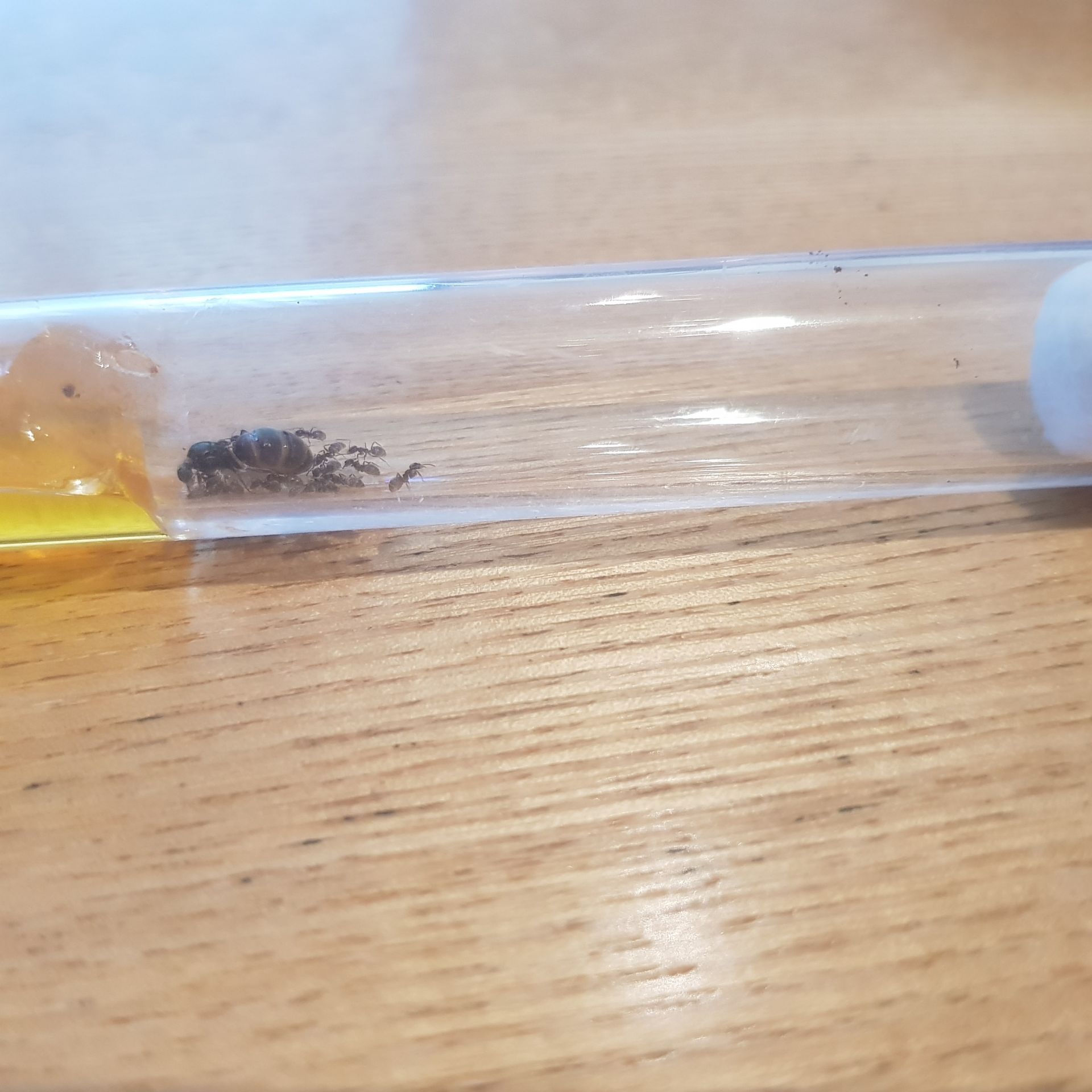Awesome! Great to see your interest. 
Update
1) This morning I put honey on a little plate into the tubes. The reason behind this was that I wasn't sure if they ''liked'' to eat the gel. Both colonies quickly discovered the honey in their tube, with a scout ant running back to tell the colony in both cases. Both colonies responded the same: nothing. Neither the scout, nor the other workers went and ate the honey. Looking at their fat little ant buts, it looked like they were filled up already.
Preliminary conclusion: The gel feeds and satisfies the worker ant cast. Or the honey was bad. 
2) This afternoon, I saw the ant queen of the Purple Murp sovereignty stuck in the gel. She bopped her butt in it, and couldn't get out on her own.
The rest of the colony seemed lethargic too.
Based on this, it seemed I have to increase the agar concentration, to make the gel more of a solid. I'll keep that in mind for the next batch.
Because the queen was stuck, I had to move the colony out of the tube, just to make sure she wouldn't get stuck again.
I made the relocation to a new home into a little experiment.
I bopped the colony into a quickly made outworld. After the initial shock of getting bopped, the colony had to make a choice:
1) Move the colony into the regular water test tube set-up
2) Move the colony into the gel based test tube set-up
(Both tubes were covered up, so they'd be in the dark)
(I used a different purple medium tube than the one they were in first. Wouldn't want pheromones leading them straight back)
The colony chooses. The colony knows best.
Here you see the little set-up. Two tubes, two choices. One gel, one water.
Their choice was clear. (Bad quality pic incoming)
You can see that the colony set up shop in the gel tube.
Something interesting I noted: there was a quite large gel droplet laying on the floor of the tube. They put a lot of their brood right on top of it. Perhaps to feed the larvae? Would love to know what that is about.
Preliminary conlusion 2: The ant colony prefers the gel tube over the conventional set-up.
Noteworthy: There is no statistical significance here. Don't consider this 100% true. The sample size is just to small. However, it looks promising on first glance.
I'd love some feedback! What are your thoughts? What can be done better? For what ant species would this work best?
![]()



















